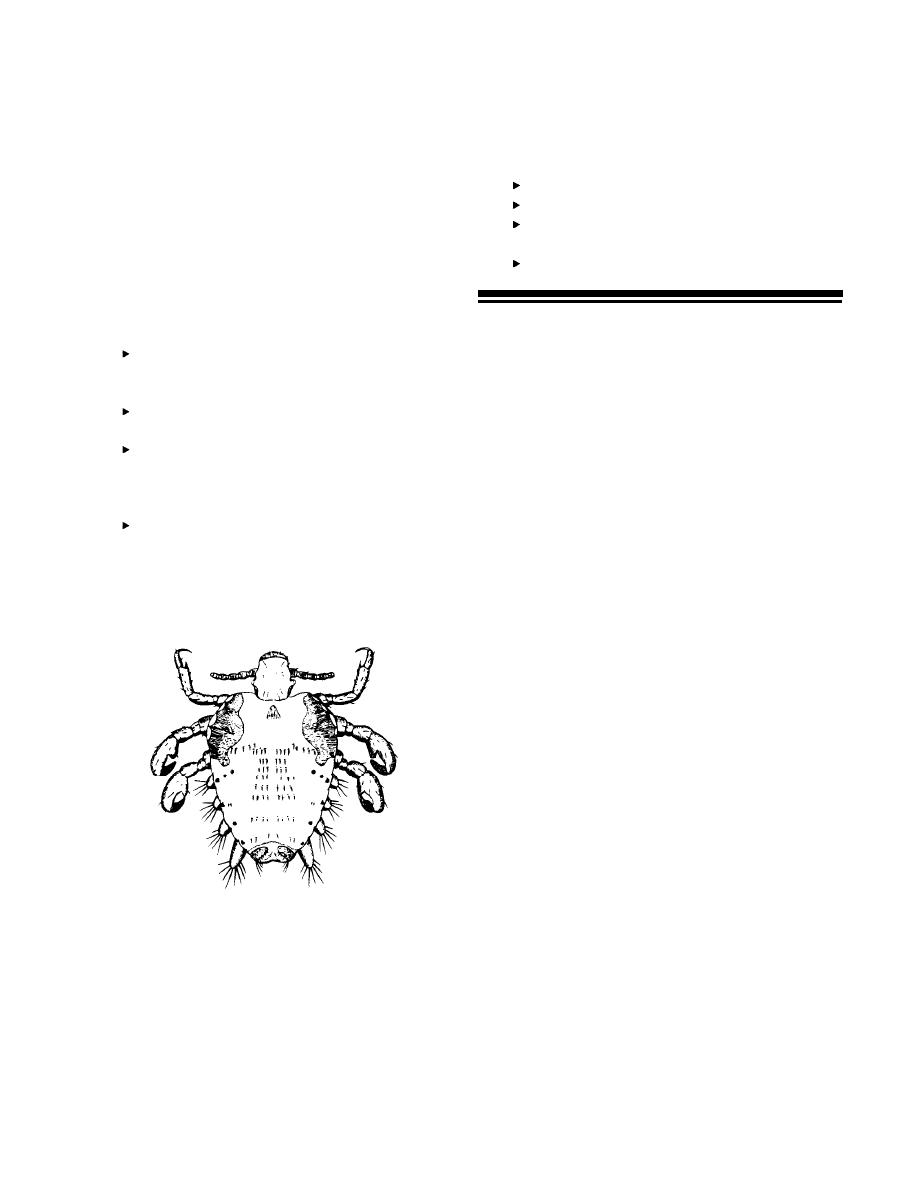

Custom Search
|
|

|
||
 lice could infest another person.
humans by emergency applications of pesticides (dusts
usually), control is maintained by cleaning and
Pubic Lice Control
washing clothes.
For these reasons body lice, historically the most
Accurate, calm communications are invaluable in
common human louse, are now rare in the United
explaining pubic louse infestations and making
States. Infestations appear on those who cannot take
recommendations for their control.
care of themselves like homeless individuals who do
Use pubic louse preparations.
not remove clothes for cleaning and older,
Wash bedding and underwear.
incapacitated individuals. Infested clothing passed from
Use detergents or disinfectants in
one individual to another is a common method of
toilets.
transmission.
Vacuum.
Body Louse Control
Some general application pesticide formulations
IMAGINARY ITCHES
are labeled for spraying but are of little value.
Imagination is the ability to form a mental image
Clean or wash clothing, bedding, etc.,
to experience something that is not present. Where the
with hot water and detergents to kill
source of imaginary itches are attributed to pests, the
lice.
itch is real, but the pest is not. Everyone experiences
Bathe to detach and kill moving lice on
an occasional itch that feels like crawling insects. A
the body.
look confirms that either an insect is present or that
Use detergents and disinfectants to clean
b e d f r a m e s , bedside furniture,
the mental image was not real. These unreal feelings
ambulances, ambulance and hospital
can be troubling. Concern that the cause of an itch
equipment.
cannot be seen, and may be a microscopic parasite can
Counsel clients carefully to control
be overwhelming. This idea affects some people so
emotionally-charged situations and
strongly that it inhibits their ability to function.
prevent louse reinfestations.
Imaginary insect-related problems can be separated
into three groupings: Entomophobia; Contagious
CRAB OR PUBIC LICE
Hysteria; and Delusions of Parasitism.
Phthirus pubis
ENTOMOPHOBIA
Taken alone, entomophobia can be defined as an
admitted fear of insects. This is not to mean a fear of
imaginary insects, but an exaggerated, illogical,
unexplained fear of actual insects. A fear of insects
occurs to a minor extent with a majority of people. In
an extreme form, when the fear inhibits normal
functioning, help from counseling professionals is
needed. Group treatment has been found to be very
successful.
Entomophobes rarely are problems for pest
control technicians. However, their excessive desire
for preventive pesticide applications may be
encountered when clients attempt to coerce technicians
Adult crab lice are only a little over half the size
to use pesticides unwisely. Such pressure should be
of body or head lice; their last two pairs of legs
resisted; technicians should remain firm and apply
terminate in hooked mitts that resemble crab claws.
controls only as professionally indicated by pest
These lice are confined to coarse pubic hair and
infestations. [The term, entomophobia, is used
sometimes eyelashes. Pubic lice move very little in the
sometimes generically to include all imaginary insect-
pubic region and produce few eggs. The most common
related categories.]
method of transmission is by sexual intercourse. When
infested pubic hair detaches, lice can hatch on
CONTAGIOUS HYSTERIA
underwear, in beds, or on toilet fixtures. If their
As the name implies, imaginary pest infestations
immediate environment is above 50F, a pair of pubic
Module Two, Chapter 4, Pg 13
|
 
|
|
 |
||